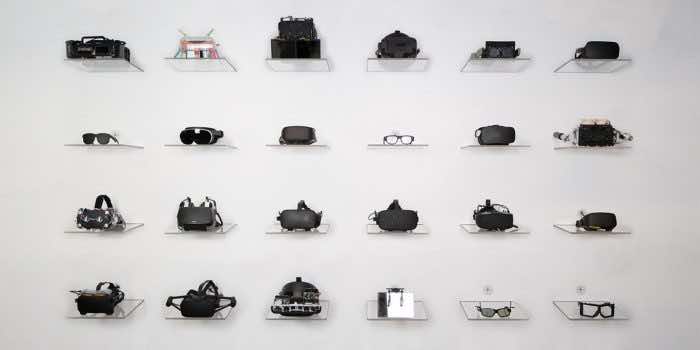Last week, Meta’s CEO stated that he is bringing a set of VR equipment that will be closer than ever to reality.
The aim of Butterscotch is to create a “retinal resolution headset,” where even the smallest details look clear rather than pixelated at 20/20 vision. The problem is that the VR headset would need an internal display higher than an 8K panel, according to Zuckerberg.
“You don’t need all those pixels all the time because our eyes don’t perceive things in high resolution across the field of view. But this is still way beyond what any display panel currently available will put out,” he said.
However, the company found a way to boost the resolution in the Butterscotch prototype by shrinking the field of view and developing “a new hybrid lens” for the headset. The resulting device can project a 20/20 vision line eye chart with minimal pixelation, although the headset does come with some trade-offs.

“It’s heavy, it’s bulky,” said Michael Abrash, chief scientist at Meta’s Reality Labs, “but it does a great job of showing how much of a difference higher resolution makes for the VR experience. And I have to say the first time I put it on, it almost felt like, well, it’s hard to go back now because it was just so sharp.”
Starburst is about delivering high dynamic range (HDR) to VR headsets, enabling them to generate bright images and vibrant colors for the user. Starburst can achieve 20,000 nits which will make it the brightest HDR display ever built, according to Meta.
In contrast, a separate prototype, called Holocake 2, is all about creating the most lightweight VR headset possible.
“It is the thinnest and lightest VR headset that we’ve ever built, and it can run any existing PC VR title,” Zuckerberg said. But on the downside, Meta still needs to develop a consumer market-friendly laser that’s safe and low-cost enough to fully realize the headset.
“It shows what a complete next-gen display system could look like,” according to Abrash, who later added: “But right now it’s only a concept with no fully functional headset yet built to conclusively prove out this architecture. But if it does pan out though, it will be a game-changer for the VR visual experience.”
Zuckerberg’s eventual goal is to use these prototypes to help his company clear a benchmark it’s calling the “Visual Turing Test,” a spin on the original AI-focused Turing Test.
“The visual Turing test, which is a phrase that we’ve adopted, along with a number of other academic researchers, is a way to evaluate whether what’s displayed in VR can be distinguished from the real world,” Abrash said.
The major challenge facing the company is mixing all the prototype technologies into a single, lightweight headset.
Zuckerberg also revealed his plan to make a sci-fi-like “metaverse” to replace the internet. But he’ll need to create a headset that can attract hundreds of millions of people into joining the new VR world. In addition, the challenges go beyond hardware and will require leaps in software and networking like photorealistic avatars and VR environments that can efficiently sustain hundreds of users in lifelike realism without lag.
However, Zuckerberg stated, “One of the reasons why this is such an exciting space is that this is genuinely new technology,” he added. “We’re not just refining the types of screens and displays that we’ve had existed on phones and computers and TVs for decades. We’re exploring new ground in how physical systems work.”


